The future of fracking
In the Bakken, the oil boom may have just begun PAGE 24

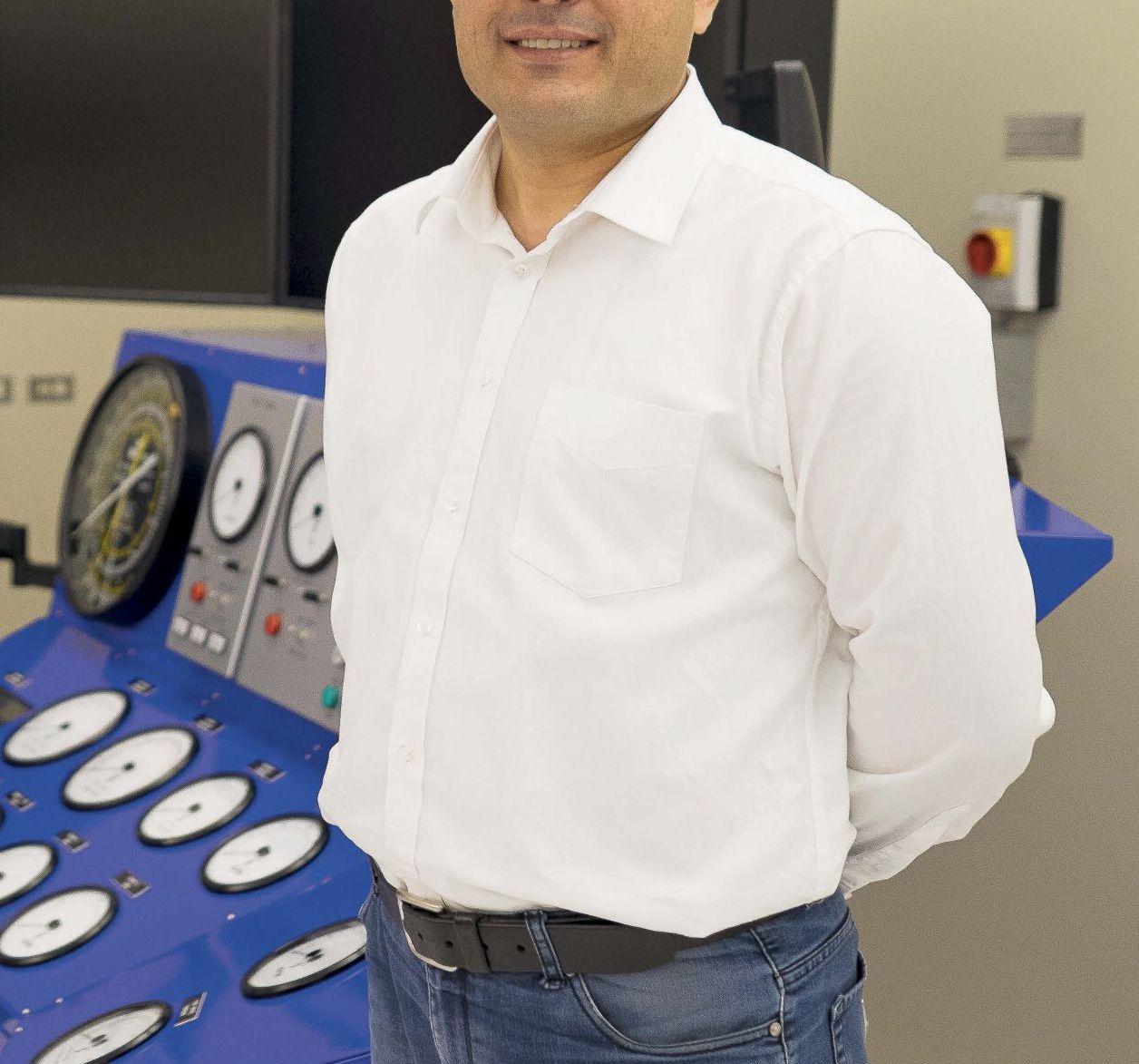
PREMIER BUSINESS MAGAZINE OF THE NORTHERN PLAINS | OCTOBER 2017
Vamegh Rasouli, Petroleum Engineering department chair, University of North Dakota
Go from “Is it possible?” to “What’s next?”
Go from “Is it possible?” to “What’s next?”
With a Business Quick Loan from U.S. Bank, you may be able to finance equipment for your expanding business needs. You may even be eligible for a Section 179 tax deduction up to $500,000. Talk to your local U.S. Bank Business Banker today.

With a Business Quick Loan from
Business Quick Loan interest rates as low as
3.49%*
Business Quick Loan interest rates as low as 3.49%*
Nick Guarcello | Business Banking - Bismarck | 701.222.6299
Nic Wagner | Business Banking - Grand Forks | 701.795.6197
Nick Guarcello | Business Banking - Bismarck | 701.222.6299
Nic Wagner | Business Banking - Grand Forks | 701.795.6197
Tyler Kummeth | Business Banking - Fargo | 701.235.0177 usbank.com/quickloan
Tyler Kummeth | Business Banking - Fargo | 701.235.0177 usbank.com/quickloan
*The 3.49% interest rate applies to a new or used equipment Quick Loan up to 80% LTV for loan terms up to 36 months for credit-qualified applicants. Disclosed rate reflects 0.50% discount based on automatic monthly payments from a U.S. Bank Business Checking account. Automatic payment from a U.S. Bank Business package checking account is required to receive the lowest rate, but is not required for loan approval. A $75 origination fee applies to all loans and will impact final APR. Higher rates may apply based on a lower credit score, a higher LTV or not having automatic monthly payments taken from a U.S. Bank Business Checking account. Advertised rate is as of 08/28/2017 and subject to change without notice based on market conditions. Minimum Quick Loan amount is $5,000. Maximum Quick Loan amount is $250,000. Credit products offered by U.S. Bank National Association and are subject to normal credit approval and program guidelines. Some restrictions and fees may apply. Financing maximums and terms are determined by borrower qualifications and use of funds. See a banker for details. U.S. Bank is not offering legal, tax or financial advice. You should consult with your tax advisor for the specific impact of the Section 179 deduction and how it may apply to your business. Credit products are offered by U.S. Bank National Association. Deposit products offered by U.S. Bank National Association. Member FDIC. ©2017 U.S. Bank. “World’s Most Ethical Companies” and “Ethisphere” names and marks are registered trademarks of Ethisphere LLC.
*The 3.49% interest rate applies to a new or used equipment Quick Loan up to 80% LTV for loan terms up to 36 months for credit-qualified applicants.Disclosed rate reflects 0.50% discount based on automatic monthly payments from a U.S. Bank Business Checking account.Automatic payment from a U.S. Bank Business package checking account is required to receive the lowest rate, but is not required for loan approval.A $75 origination fee applies to all loans and will impact final APR. Higher rates may apply based on a lower credit score, a higher LTV or not having automatic monthly payments taken from a U.S. Bank Business Checking account.Advertised rate is as of 08/28/2017 and subject to change without notice based on market conditions.Minimum Quick Loan amount is $5,000.Maximum Quick Loan amount is $250,000.Credit products offered by U.S. Bank National Association and are subject to normal credit approval and program guidelines. Some restrictions and fees may apply. Financing maximums
Companies” and “Ethisphere” names and marks are registered trademarks of Ethisphere LLC.
terms
of
a
for
U.S. Bank is not offering legal, tax or financial advice.You should consult with your tax
for the specific impact of
179
how it may
to your business.Credit products are offered by U.S. Bank National Association. Deposit products offered by U.S. Bank National Association. Member FDIC. ©2017 U.S. Bank. “World’s Most Ethical
and
are determined by borrower qualifications and use
funds. See
banker
details.
advisor
the Section
deduction and
apply
U.S. Bank, you may be able to finance equipment for your expanding business needs. You may even be eligible for a Section 179 tax deduction up to $500,000. Talk to your local U.S. Bank Business Banker today.
SMART INVESTMENT
VALLEY CITY STATE UNIVERSITY, BOILER PLANT | VALLEY CITY, NORTH DAKOTA
An innovative boiler plant at Valley City State University is saving money while powering the campus into the future. The highly energy-efficient facility sheds light on the inner workings of steam production to provide a learning opportunity for students and other passersby. Also, because they are one of North Dakota’s leaders in environmental sustainability, Valley City State University is planning to use this new plant to develop the next phase of clean coal processing and activated carbon capture in a later addition in partnership with the Energy and Environmental Research Center at the University of North Dakota.

jlgarchitects.com 100% EMPLOYEE OWNED Inc. Magazine’s 50 Best Places to Work in America | Architect Magazine Top 50 US Firm
We would like to thank all of our awesome employees for voting us one of the region’s Best Places to Work 4 years in a row!
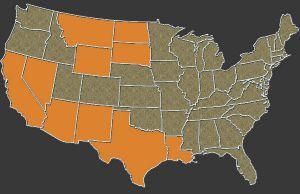







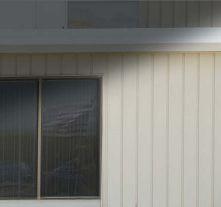
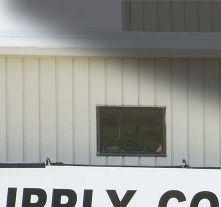

WWW.FISHERIND.COM WE OFFER: COMPANY CULTURE: HEADQUARTERS: 3020 Energy Drive Dickinson, ND 58601 (701) 456-9184 | (800) 932-8740 Fisher Sand & Gravel Co. | General Steel & Supply Co. | Arizona Drilling & Blasting | Fisher Grading & Excavation Fisher Sand & Gravel - NM, Inc. | Fisher Ready Mix | Southwest Asphalt | Southwest Asphalt Paving Fisher Industries is a family of businesses that serves all aspects of the aggregate industry. We are a unified team working together to cement our place in the industry. From accountants to welders, we employ over 1,100 professionals during our peak seasons. • 401(k) Plans • Profit Sharing • Company Sponsored Term Life • Employee Assistance Program • Customizable Benefits • Milestone Celebrations • Holiday Parties • Luncheons • Company Picnic • Annual Golf Scramble • and More!!











Apprenticeships Create Skilled Employees

Apprenticeships:
• Help build a highly skilled workforce.
• Blend training with work and productivity.

• Help you tailor employee training to fit your needs.
• Provide an internal career ladder to promote current workers.
Financial and technical resources are available to North Dakota employers to start an apprenticeship program at your company.
To get started, contact North Dakota Department of Commerce at 701-328-5300 or ndworkforce@nd.gov.
NDworkforce.com




















photography, commissioning agents can find energy inefficiencies such as hot spots, pictured here. For more about commissioning, see Page 28.
IMAGE: COMMISSIONING SOLUTIONS


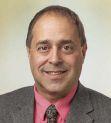

TWITTER.COM/PRAIRIEBIZ FACEBOOK.COM/PRAIRIEBUSINESS PRAIRIEBU SINESSMAGAZINE.COM PB INSIDE OCTOBER 2017 VOL 18 ISSUE 10 FEATURES DEPARTMENTS 24 ENERGY THE FUTURE OF FRACKING RESEARCHERS ARE LEARNING HOW TO PULL MORE OIL OUT OF THE BAKKEN’S ‘TIGHT SHALE’ 28 CONSTRUCTION COMMISSIONING CEREMONY A LOOK AT COMMISSIONING, A LESSER-KNOWN BUT EXCEPTIONALLY USEFUL PART OF THE CONSTRUCTION INDUSTRY ON THE COVER Vamegh Rasouli is chair of the Department of Petroleum Engineering at the University of North Dakota and a Continental Resources Distinguished Professor of petroleum engineering. IMAGE: NICK NELSON / FORUM NEWS SERVICE prairie people VISIT WWW.PRAIRIEBUSINESSMAGAZINE.COM TO SEE THESE AND OTHER NEW HIRES, PROMOTIONS AND AWARD WINNERS IN THE REGION. DR. TERRY BENSON, LINDA BURDETTE A HOSPITALIST AND GRADUATE OF THE UNIVERSITY OF SOUTH DAKOTA’S SANFORD SCHOOL OF MEDICINE, HAS JOINED ESSENTIA HEALTH IN FARGO. HAS BEEN NAMED ASSISTANT DEAN OF THE COLLEGE OF NURSING AT SOUTH DAKOTA STATE UNIVERSITY.
infrared
Using
8 10 EDITOR’S NOTE
12 ECONOMIC DEVELOPMENT
16 DOWNTOWNS
BISMARCK
ENERGY
BY KATE HERZOG 14 UTILITIES HOW XCEL ENERGY IS PUTTING UNMANNED AIRCRAFT SYSTEMS TO WORK BY MICHAEL LAMB 22 Business Insider EAPC AT 50 THE GRAND FORKS, N.D. FIRM’S PARTNERS REFLECT ON 50 YEARS OF ENGINEERING AND ARCHITECTURAL SERVICES 20 Prairie News 36 CONSTRUCTION CORNER WEST FARGO SCHOOLS EXTENSIVE CONSTRUCTION SHOWS THE SCHOOL DISTRICT TO BE ONE OF NORTH DAKOTA’S FASTEST GROWING 44 INSIGHTS & INTUITION 46 BY THE NUMBERS 32 TECHNOLOGY CYBERSECURITY FOR ALL AND WE DO MEAN FOR ALL, AS YOUR CAR, YOUR APPLIANCES AND YOUR PHONE ARE LIKELY TO BE AFFECTED 40 GENERATION NEXT A COLLEGE THAT KNOWS HOW TO COLLEGE THAT WOULD BE LAKE AREA TECHNICAL INSTITUTE IN WATERTOWN, S.D., ONE OF AMERICA’S BEST COMMUNITY COLLEGES 18 PRAIRIE PEOPLE
TO READ IS TO LEARN BY TOM DENNIS
A Q&A ON THE WORKFORCE SHORTAGE WITH NEEL KASHKARI, PRESIDENT OF THE FEDERAL RESERVE BANK OF MINNEAPOLIS
DOWNTOWN
GAINS NEW
FROM START-UPS




























To read is to learn A
key goal of Prairie Business magazine is not just to inform readers of what’s going on, but also to teach. That’s the goal we kept in mind as we put together this month’s issue.
Start with Neel Kashkari, the president of the Federal Reserve Bank of Minneapolis, whose Q&A expounds on a valuable lesson of economics. That lesson is this: If a shortage of workers is the problem, raising wages is a big part of the answer, Kashkari suggests. Read his Q&A for more.
Speaking of workforce shortages, few jobs are harder to fill than “cybersecurity specialist,” and few jobs are seeing such rapid wage gains as a result. The North Dakota University System is onto something with its cybersecurity focus, as the field clearly is poised to be the next big thing, our story reveals.
Then there’s Lake Area Technical Institute in Watertown, S.D., which can teach America a thing or two about community-college success. As described in this issue’s Generation Next section, Lake Area Tech systematically refined its approach, experimenting with different strategies and keeping the ones that worked.
The results include graduation rates far above national averages, a 99 percent placement rate among graduates, an ever-shrinking achievement gap between low- and high-income students – and earlier this year, the prestigious Aspen Prize for Community College Excellence. Through it all, Lake Area Tech’s administration tried to create a culture of striving for continuous improvement, Generation Next reports.
Not a bad lesson for college presidents – and us all. PB
Good reading, Tom Dennis
I welcome your feedback and story ideas. Call me at 701-780-1276 or email me at tdennis@ prairiebusinessmagazine.com.

Prairie Business magazine is published monthly by the Grand Forks Herald and Forum Communications Company with offices at 375 2nd Avenue North, Grand Forks, ND 58203. Subscriptions are available free of charge. Back issue quantities are limited and subject to availability ($2/copy prepaid). The opinions of writers featured in Prairie Business are their own. Unsolicited manuscripts, photographs, artwork are encouraged but will not be returned without a self-addressed, stamped envelope.
SUBSCRIPTIONS
Subscriptions are free www.prairiebusinessmagazine.com
ADDRESS CORRECTIONS
Prairie Business magazine Box 6008 Grand Forks, ND 58206-6008 Beth Bohlman: bbohlman@prairiebusinessmagazine.com
ONLINE www.prairiebusinessmagazine.com
PUBLISHER KORRIE WENZEL AD DIRECTOR STACI LORD EDITOR TOM DENNIS
CIRCULATION MANAGER BETH BOHLMAN
TWITTER.COM/PRAIRIEBIZ FACEBOOK.COM/PRAIRIEBUSINESS PRAIRIEBUSINESSMAGAZINE.COM 10
OCTOBER 2017 VOL 18 ISSUE 10 TOM DENNIS tdennis@prairiebusinessmagazine.com 701.780.1276
EDITOR
LAYOUT DESIGN, AD DESIGN ANDY GOBLE SARA SLABY KRIS WOLFF JASON MAGSTADT ACCOUNT MANAGER NICHOLE ERTMAN 800.477.6572 ext. 1162 nertman@prairiebusinessmagazine.com JENNIFER LEROUX OLSZEWSKI 800.477.6572 ext. 1167 jlolszewski@prairiebusinessmagazine.com




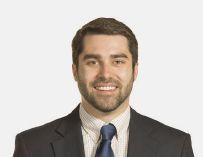
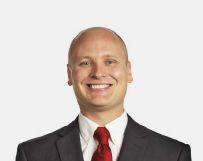
Meeting the ‘too few workers’ challenge
Raising wages and encouraging immigration would be good places to start, suggests Neel Kashkari, president of the Federal Reserve Bank of Minneapolis

Editor’s note: Prairie Business magazine recently posed the following questions to Neel Kashkari, Minneapolis Fed president, and we thank him for agreeing to answer. The questions center on the “workforce shortage” that so many employers in our region say is their No. 1 barrier to growth.
Q.WHEN YOU SPOKE TO THE SIOUX FALLS (S.D.) ROTARY IN AUGUST, SOME ROTARIANS COMPLAINED ABOUT A WORKFORCE SHORTAGE, AND YOU TOLD THEM, “IF YOU’RE NOT RAISING WAGES, THEN IT JUST SOUNDS LIKE WHINING. ... ARE ANY OF YOU PLANNING TO RAISE WAGES IN THE NEXT YEAR OR TWO? OR ARE YOU JUST COMPLAINING THAT YOU CAN’T FIND WORKERS?” COULD YOU ELABORATE?
A.It’s basic economics: When a resource (labor, in this case) becomes more scarce, its price (wages) should increase.
My point is not to call anyone a whiner, but to suggest that an absence of wage growth may be a signal that the labor market is not as tight as it seems.
One of our mandates at the Federal Reserve is to support maximum employment, so we closely monitor this type of data and take it into consideration when making policy decisions.
12 TWITTER.COM/PRAIRIEBIZ FACEBOOK.COM/PRAIRIEBUSINESS PRAIRIEBUSINESSMAGAZINE.COM PB ECONOMICDEVELOPMENT OCTOBER 2017 VOL 18 ISSUE 10
Neel Kashkari president Federal Reserve Bank of Minneapolis
Neel Kashkari, president of the Federal Reserve Bank of Minneapolis, speaks to an audience. IMAGE: MINNEAPOLIS FED
Q. A.
Q. A.
YOU ALSO POINTED TO WESTERN NORTH DAKOTA’S SUCCESS AT DRAWING WORKERS ONCE THE OIL BOOM DROVE UP WAGES THERE. WHAT LESSON SHOULD EMPLOYERS LEARN FROM THE BAKKEN AREA’S EXAMPLE?
It might be an extreme case study, but the Bakken oil boom has two main lessons. First, in a really tight labor market, you see faster wage growth.
Second, workers will respond to higher wages. During the boom, people were moving to western North Dakota from all over the country to take those high-paying jobs.
THE RESPONSE FROM MANY EMPLOYERS IN OUR REGION ALMOST CERTAINLY WILL BE, “WE’D LIKE TO RAISE WAGES, BUT WE CAN’T AFFORD TO.” MANY LIKELY WOULD ADD, “OUR PROFITS ARE THIN AS IT IS.” HOW WOULD YOU COUNSEL THE BUSINESS OWNERS AND CEOS WHO SAY THEY’RE IN THAT SITUATION?
I hear that said enough that I’m sure it’s true for a lot of employers. I’m not in a position to tell anyone how to run their business, and as a policymaker, I have a different focus.

Congress has charged the Federal Reserve with two goals: maximum employment and price stability. We want unemployment to be as low as possible without triggering inflation.
The challenge is in trying to include everyone who wants to work in the job market and not just looking at the overall unemployment number, which might look low and lead us to believe that we’ve achieved “maximum” employment.
One way for us to see if there is still room for more people to join the job market is to look at wage growth. Right now, wage growth remains relatively modest, so that tells me that there’s room in the economy to get more people into new jobs.
Q. A. WOULD YOUR MESSAGE BE ANY DIFFERENT FOR BUSINESS OWNERS IN RURAL AREAS? WHAT SUCCESS STORIES HAVE YOU ENCOUNTERED OF SMALL-TOWN COMPANIES OR COMMUNITIES THAT ARE THRIVING?
Q. A.
SOME CIVIC LEADERS THINK THE WAY TO BOOST WAGES OVERALL IS TO MANDATE AN INCREASE IN THE MINIMUM WAGE. WHAT’S YOUR VIEW?
There are winners and losers when cities raise the minimum wage, and policymakers need to be aware of the tradeoffs. Each city is in the best position to make those judgments for itself.
Increasing the minimum wage is great for those who already have jobs and hopefully get to keep their jobs, but it may make finding a new job even harder for those currently unemployed.
Personally I think a better solution is a strong job market, one in which businesses are competing for workers, more jobs are available and wages are rising for everyone. This scenario doesn’t have some of those potential unintended consequences.
Q. A.
In my travels throughout the Ninth District, I’ve seen so many examples of thriving communities that it gives me great hope for our future.
Some common threads among those doing well include: First, invest in your people and in your community. The best way to attract and keep workers is to for them to have a good place to live and to raise their families.
Second, embrace new communities. From the fields of North Dakota to the Iron Range of Minnesota, the Ninth District is a region built by immigrants, and this is no less true of the places that are thriving today.
Third and finally, focus on your strengths. Not everywhere can or should be Silicon Valley. Communities across this region have their own competitive advantages that they can build upon – advantages such as a strong agricultural sector, robust transportation infrastructure, proximity to research universities, access to natural amenities, and most important, talented people eager to contribute to their community.
It’s up to each area to identify their strengths and build on them.
The Ninth District is a diverse region, and seeing so many different communities thrive in their own way is one of the things I enjoy most in my travels.
WHAT ROLE DO YOU SEE IMMIGRATION PLAYING IN THIS ISSUE AND THE REGION’S ECONOMY?
Immigration policy and economic growth are closely tied. Population growth has historically supported economic growth because more people means more purchases of things like homes, cars and refrigerators.
If population growth slows, either through a policy that restricts immigration or because we are having fewer babies, then economic growth will also decline.
So this just boils down to math. Do we want economic growth, or not? If yes, we need to continue to welcome people into our country.
13 ECONOMIC DEVELOPMENT
Drones prove their utility for utilities
Xcel Energy researches, uses drones to advance growth in North Dakota
By Michael Lamb
GRAND FORKS, N.D. – Keeping the lights on, safely, reliably and affordably: This is Xcel Energy’s commitment to the communities we serve. We’ve invested more than $1 billion in infrastructure in North Dakota over the last five years, investments that will help businesses grow and prosper.
Xcel Energy expanded the high-voltage power grid and substations to ensure reliability and increase capacity to move power across the region. We’ve built new wind farms that bring great economic benefit and serve our customers with low cost power.
And in addition to investing in the basics, Xcel Energy also is pursuing future technologies to help improve our operations. One area of focus is the rapidly evolving field of Unmanned Aircraft Systems or drones.

Xcel Energy is excited to be part of a consortium of partners here in North Dakota working to advance UAS through research and real-
world applications. Most North Dakotans already know about the state’s national reputation in aviation, its highly skilled workforce and state-of-the-art facilities. In working on UAS research, we understand why North Dakota is known as the “Silicon Valley of Drones.”
Xcel Energy’s collaboration with North Dakota on UAS is important for our company and the industry. This technology is improving the safety and efficiency of inspecting utility infrastructure in many ways.
For example, we know our customers need and expect power to be on 24/7. After a storm hits, we move quickly to assess the damage to address where and what repairs are needed. Restoring power can be delayed if we can’t get into affected areas due to downed trees, iced roads or flooding. This is where using drones helps – they fly where our trucks can’t drive, and they’re able to gather information, day or night.
14 TWITTER.COM/PRAIRIEBIZ FACEBOOK.COM/PRAIRIEBUSINESS PRAIRIEBUSINESSMAGAZINE.COM PB UTILITIES OCTOBER 2017 VOL 18 ISSUE 10
Xcel Energy workers equip a drone to inspect power lines for the utility. IMAGE: XCEL ENERGY
Xcel Energy began this groundbreaking research last year with North Dakota, the University of North Dakota and many other partners. The group is evaluating ways to use UAS to improve storm restoration response times by testing different drone technologies using simulated natural disaster scenarios.
UND leveraged its data center capabilities to consume a huge volume of data that was collected from different types of unmanned aircrafts flying at high and low altitudes over the state.


Xcel Energy is also using drone technology to inspect more than 20,000 miles of transmission lines in 10 states, including North Dakota. Through a firstof-its-kind partnership with the Federal Aviation Administration, Xcel Energy is using drones to inspect critical infrastructure while providing real-world data and critical feedback to the FAA.
This information will help shape future government policies that will allow the safe and routine use of unmanned aircrafts beyond the operator’s visualline-of-sight to inspect and manage the utility grid.

Both of these initiatives aim to transform the way Xcel Energy and the utility industry do their work. Without the support of our partners at the Northern Plains Test Site, the FAA, the North Dakota Department of Commerce and many others, these programs would not be possible.
Many more exciting milestones are ahead for UAS. Xcel Energy looks forward to pursuing partnerships that will advance this game-changing technology in North Dakota and beyond. PB
MICHAEL LAMB VP, OPERATING SERVICES AND ENTERPRISE TRANSFORMATION OFFICE XCEL ENERGY
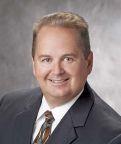

15
UTILITIES
Drone technology is changing the way Xcel Energy does business. IMAGE: XCEL ENERGY
Downtown rising Start-up community invigorates downtown Bismarck
By Kate Herzog
BISMARCK, N.D. – “Old ideas can sometimes use new buildings; new ideas must use old buildings.”
This phrase was uttered by one of the most notable modern urbanists, Jane Jacobs. She pioneered many ideas about successful neighborhoods that created idea collision, rejecting urban planning that would simply tear everything down to build utopian top-down neighborhoods.
Sixty-six years after her most influential work, “The Death and Life of Great American Cities,” was published, entrepreneurs have embraced new ideas in old buildings. In downtown Bismarck, an emerging class of entrepreneurs and thought leaders has reinvigorated many historic buildings.
The start-up community, as it is often referred to, has hit the ground running in downtown Bismarck with events, initiatives and networks under the umbrella called Start Bismarck, a grassroots organization that promotes start-up activities, organizes key events, embraces creativity and encourages risk-taking within the Bismarck-Mandan community.
Each Wednesday morning, the community gathers at Dakota Stage, formerly the Capital Theater — a building built by Ed Patterson in 1905 — to listen to an entrepreneur pitch business ideas at the weekly event called 1 Million Cups.
Speakers have 15 minutes to present their business goals and challenges, and then 30 minutes to engage with the audience. The last question for presenters is always the same: “How can the BismarckMandan start-up community help you succeed?”
Two start-up companies have co-located in a two-story 1920 brick building on Main Avenue — D&N Cinematics, a video production company, and Up & Running, a web design company. A record shop is housed in the lower level, which features a vintage cigar advertisement uncovered after decades behind Sheetrock.
Crews from the two main businesses hosted Start-Up Drinks on Aug. 1, designed to join thinkers, dreamers and leaders over drinks to celebrate entrepreneurship in our community.
Attendees come from all backgrounds – the mayor and first lady of Bismarck, team members from Co-Schedule (one of North Dakota’s fastest-growing start-ups), the two young founders of Bismarck Magazine, established members of the financial community, staff from nonprofit business development organizations and supporters of the Start Bismarck initiative.
Some entrepreneurs have built infrastructure that supports Bismarck’s start-up community. On Main Avenue in a warehouse built by International Harvester in 1929, a husband-and-wife entrepreneur
team has created the side project Co-Studio, “A Space for Creatives.” Amos and Carly Kolbo, who run a very successful photography business, recently hosted two networking events created by a small team led by Ashton Hauff, a photographer and designer.
The events are called Makewell, and they’re meant for “anyone who uses their skills, creativity and passions for problem solving or to make something new,” as Hauff told the Bismarck Tribune.

Or as Makewell’s mission statement reads, “Makewell is all about creating a space for local makers and doers to connect, learn, and be inspired by those around them. …As makers, no matter your craft or industry, we often face the same challenges and raise the same questions. Let’s come together to challenge each other to make better, to grow from one another’s experiences, and to encourage each other’s dreams.”
Makewell speakers help local entrepreneurs brand their business, keep their business model strong and get paid what they are worth.
In the second story of downtown’s former Lucas Department Store, synonymous with early Bismarck, another husband-and-wife business team has created a co-working space called Juniper Workantile. Entrepreneurs and start-ups can join Workantile and use the space to grow their businesses, leaving the basement for a professional space with all the amenities that a new or existing business would need.
Start-ups and historic buildings have a symbiotic relationship in downtown Bismarck. Historic buildings add weight and credibility to entrepreneurial endeavors. Start-ups reinvigorate downtowns decimated by poor urban renewal and sprawl policies.
Jacobs’ methodology for her urbanist principles was always grounded in grassroots efforts. She fought for neighborhoods that bubbled up naturally from their surroundings, not laid out in an office somewhere. Jacobs challenged the city planning status quo that was often patronizingly explained to her. She pushed boundaries and challenged communities to preserve their identity and uniqueness, knowing that she was doing it for future generations.
It’s fitting that start-ups, entrepreneurs and thought leaders have united to create a grassroots movement of revitalization in historic downtown Bismarck. PB
Kate Herzog
MARKETING AND ASSISTANT DIRECTOR, DOWNTOWNERS ASSOCIATION PRESIDENT, DOWNTOWN BISMARCK COMMUNITY FOUNDATION BISMARCK
16 TWITTER.COM/PRAIRIEBIZ FACEBOOK.COM/PRAIRIEBUSINESS PRAIRIEBUSINESSMAGAZINE.COM PB DOWNTOWNS OCTOBER 2017 VOL 18 ISSUE 10
KATE@DOWNTOWNBISMARCK.COM 701-223-1958
Kate Herzog, marketing and assistant director, Downtowners Association, Bismarck.
IMAGE: KYLE MARTIN PHOTO












Prairie People
U.S. CONSUL BEGINS POSTING IN WINNIPEG
Anthony (Tony) Pagliai recently arrived in Winnipeg to assume the post of Consul and Principal Officer at the United States Consulate.
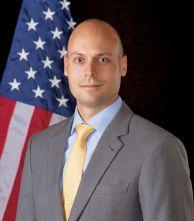
Pagliai’s primary responsibility is to advance the interests and goals of the United States to the people of Manitoba, and report local views and issues to the U.S. government. His expected tour of duty is three years.
Pagliai is a career diplomat whose previous foreign postings include Tanzania, Thailand, the Bahamas and Mexico. He earned bachelor’s and master’s degrees from the University of Florida. He speaks Spanish and Thai. Pagliai is married to Dr. Geneva Pagliai, who was born and raised in Winnipeg.
AT&T NAMES NEW VP/GENERAL MANAGER IN THE NORTHERN PLAINS REGION

AT&T named Lisa Mitchell-Kastner to oversee mobility and consumer markets in the Northern Plains Region. The region includes Minnesota, North Dakota, South Dakota, Iowa and Nebraska.
Mitchell-Kastner will manage more than 800 sales and service consultants, more than 60 AT&T-owned retail locations, more than 90 authorized retail locations and more than 320 national retail locations.
Mitchell-Kastner previously served as the company’s vice president of human resources. She holds master’s degrees in industrial/organizational psychology and business management from Stephen F. Austin State University in Texas.

ASKELSON NAMED INTERIM DIRECTOR OF UND’S RESEARCH INSTITUTE FOR AUTONOMOUS SYSTEMS
Mark Askelson will serve as interim executive director for the UND Research Institute for Autonomous Systems.
Askelson received two bachelor’s degrees from UND before earning both his master’s and Ph.D. in meteorology at the University of Oklahoma.
As a professor of atmospheric sciences at UND, Askelson specializes in detect and avoid technologies (DAA) and unmanned aircraft systems, among other fields.
The research institute was created to help integrate the activities and resources of UND and the North Dakota University System. Its goal is to establish unmanned and autonomous research leading to economic development and diversification in North Dakota.
PHYSICIANS JOIN ALTRU HEALTH SYSTEM STAFF
A neurologist, pediatrician and anesthesiologist are among the physicians who’ve recently joined Altru Health System in Grand Forks, N.D.
n Dr. James Miles is one of three pediatric neurology specialists in North Dakota. Miles earned his medical degree from the University of North Dakota School of Medicine in Grand Forks.


He completed his pediatric and adolescent medicine residency, as well as his child neurology fellowship, at Mayo Clinic in Rochester, Minn.
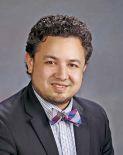
n Dr. Ahmad Qawasmi has joined the pediatric team at Altru Health System. Qawasmi earned his medical degree from Al-Quds University, Al-Quds Faculty of Medicine in Jerusalem. He completed his residency at Children’s Hospital of Michigan in Detroit, Mich., then joined the pediatric hematology and oncology program at UT Southwestern Medical Center, Children’s Medical Center in Dallas, Texas.
n Dr. Bethany Gourneau has joined the anesthesia team at Altru Health System. Gourneau earned her medical degree from University of North Dakota in Grand Forks. She also earned a master of public health degree from Dartmouth College in Hanover, N.H. She completed her anesthesiology residency at the University of Kansas in Kansas City, Kan.
NORTH DAKOTA GOVERNOR NAMES FIRST CHIEF PEOPLE OFFICER
Gov. Doug Burgum recently announced the hiring of Cheri Schoenfish as state government’s first chief people officer.
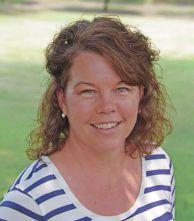
Schoenfish is taking a one-year civic leave of absence from her current position as Microsoft’s director of global talent management to fill the CPO position, starting Oct. 9.
“As CPO, Schoenfish will be the state’s workforce strategist and organizational development leader, with a focus on enhancing performance and productivity as she coaches and advises the governor’s leadership team,” according to a press release.
Schoenfish earned a bachelor’s degree in business administration with a math minor from Dickinson State University and worked for 14 years in training and human resources at Great Plains Software in Fargo.
18 TWITTER.COM/PRAIRIEBIZ FACEBOOK.COM/PRAIRIEBUSINESS PRAIRIEBUSINESSMAGAZINE.COM PB PrairiePEOPLE OCTOBER 2017 VOL 18 ISSUE 10
SDSU STUDENT NAMED TO NATIONAL COUNCIL
BROOKINGS, S.D. – South Dakota State University graduate student
Brandon Varilek has been named to the Graduate Nursing Student Academy Leadership Council.
The Leadership Council consists of 10 graduate nursing student members, each of whom serves a two-year term.
Varilek was named a GNSA liaison in 2016.
Varilek, who’ll complete his degree in 2019, would like to become a faculty member at a university. A registered nurse, he currently works full time at Avera McKennan as a solid organ transplant coordinator.
NICOLE GRIENSEWIC MICKELSON ELECTED GMNP PRESIDENT
Nicole Griensewic Mickelson, executive director of Region Nine Development Commission, was elected as president of the Greater Minnesota Partnership at the organization’s annual meeting.

As president of the nonprofit, she will help direct efforts to inform state legislators on issues that are important to economic development in Greater Minnesota, such as workforce housing, job skills training, broadband expansion and environmental regulations.
Griensewic Mickelson has served as executive director of Region Nine, which serves nine counties in south central Minnesota, since 2012.
ESSENTIA ADDS TO MEDICAL STAFF
n Dr. Caitlin Pandolfo, an obstetrician and gynecologist, has joined the Essentia Health-32nd Avenue Clinic in Fargo.

Pandolfo is originally from Bowbells, N.D. She earned a medical degree from the University of North Dakota in Grand Forks, N.D. She completed a residency in obstetrics and gynecology at the University of Massachusetts Medical Center in Worcester, Mass.
MARK STEELE RETURNS TO HOUSTON ENGINEERING
Mark Steele has returned to full-time status in Houston Engineering, Inc.’s Bismarck office as a computer-aided design or CAD designer.
Steele worked full time at HEI from 2004-10 as a CAD supervisor, then taught engineering technology and geographic information systems at Bismarck State College. While teaching at BSC, he interned at HEI for the past several years.
A Bismarck native, Steele has an associate’s degree in architectural drafting and estimating technology from North Dakota State College of Science and a bachelor’s degree in technical education from Valley City State University in Valley City, N.D.
RUIT APPOINTED ASSOCIATE DEAN AT UND MEDICAL SCHOOL
GRAND FORKS, N.D. — Kenneth G. Ruit, associate professor in the Department of Biomedical Sciences, has been named associate dean for education and faculty affairs at the UND School of Medicine and Health Sciences.
Ruit previously served as associate dean for educational administration and faculty affairs.
Ruit received his Ph.D. in cell biology, neurobiology and anatomy from Loyola University of Chicago in 1989. A faculty member at the medical school since 1991, he teaches human anatomy and neuroscience.
First serving as assistant dean for academic and faculty affairs in 2008, Ruit assumed the role of associate dean for educational administration and faculty affairs in 2014.
Essentia Health hired at least five physicians and many other medical professionals over the summer. The newcomers include:
n Dr. Travis Swartz, a general surgeon, has joined the Essentia Health St. Mary’s-Detroit Lakes Clinic in Detroit Lakes, Minn.
Swartz earned a medical degree from Lake Erie College of Osteopathic Medicine in Erie, Pa. He completed a residency in general surgery at the University of North Dakota in Grand Forks, N.D.
n Dr. Philip Wanzek, a urologist, has joined the Essentia Health-32nd Avenue Clinic in Fargo, N.D. Wanzek grew up in Valley City, N.D. He earned a medical degree from A.T. Still University in Kirksville, Mo.
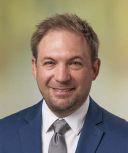
He completed a residency in urology at the Mayo Clinic in Rochester, Minn.
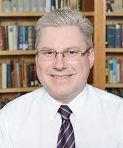

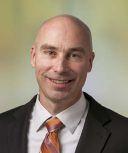
He’s been an active member of the Army National Guard for 23 years and served in Afghanistan with the 1-188th ADA based in Grand Forks.
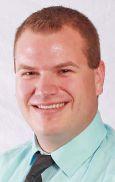
19
PRairie PEOPLE
Collaboration creates ‘Hospital within a hospital’
By Joanna Slominski
Digi-Key breaks ground on 1 million-squarefoot expansion
At least 1,000 new jobs expected as a result of the $300 million project
FARGO – Something new is building at Sanford Medical Center in Fargo, where patients were first admitted in July. Just as the Mortenson construction team wrapped up work on the new nine-floor hospital, things began bustling on the seventh floor.
That’s where Vibra Healthcare is building a 31-bed, long-term acute care hospital or “hospital within a hospital.” It’s scheduled to open by the end of the year.
This unique partnership was formed by Vibra Healthcare and Sanford Medical Center of Fargo. Near the end of Mortenson’s five-year engagement to build the new $494 million medical center, the company was approached to build Vibra Healthcare’s “hospital within a hospital.” That meant the west wing of the medical center’s seventh floor would become Vibra Hospital of Fargo, a long-term acute care hospital whose 31 beds would serve patients who need intensive acute care following discharge from other area medical facilities.
Vibra Hospital of Fargo has been providing acute care for regional patients since 1998. The company has some 92 long-term acute care facilities across the United States, including the center in Fargo and one in Mandan, N.D.
The company will be relocating its Fargo services from Sanford South University medical center to the new medical center, with the first patient tentatively scheduled to be admitted in December.

The new collaboration helps all parties. For Vibra Healthcare, it results in a seamless connection to Sanford. For Sanford, it creates a closer tie to acute care facilities for those patients who get discharged but need additional care.
For patients and families, the partnership will create an easy transition for those needing extended care.
And for Mortenson, the new build-out means an additional $9 million in construction business that will be completed by 2018.
“What’s special and unique in this collaboration is that we are technically ‘embedded’ within the Sanford Medical Center,” said Custer Huseby, regional CEO for Vibra Healthcare.
“This is the best possible situation for those patients who are discharged from the hospital but need additional care. They will have continued high-skilled services with few disruptions.
“This partnership also offers close coordination with care providers and convenient records transfer,” Huseby said. PB
Joanna Slominski CONSTRUCTION EXECUTIVE MORTENSON CONSTRUCTION OF NORTH DAKOTA
THIEF RIVER FALLS, Minn. -- Walking across the expansive parking lot just west of Digi-Key in Thief River Falls takes about five minutes.
Coincidentally, the massive asphalt slab is nearly the exact footprint of the planned millionsquare-foot expansion at Digi-Key, a distributor of electronics components that already employs 3,200 in this western Pennington County town of 8,000.
In mid-September, dignitaries from the company, the city and around the state broke ground for the expansion, which could eventually add more than 1,000 jobs at Digi-Key and, leaders predict, spur about $184 million in new state revenue annually.

The expansion project itself could cost as much as $300 million.
About 70 people attended, including Minnesota Gov. Mark Dayton, U.S. Rep. Collin Peterson, D-Minn., Mayor Brian Holmer, members of City Council and several members of the state Legislature.
“I’m just in awe,” Dayton said. “I cannot begin to express how important your company is in Thief River Falls. This is a great example of all of us working together for the state of Minnesota. Congratulations again to everybody involved.”
The project first was announced in the spring and officially put in motion earlier this summer. Company leaders praised the work of local and state politicians who pushed for incentives that were used to make the project happen, including sales-tax exemptions to offset costs, loans from the Minnesota Investment Fund and the sale of city property for the expansion.
It could help the company increase its employees to as many as 4,500 by 2027. By comparison, there were 654 employees in 1997.
Starting wages at Digi-Key generally are around $32,600, with a good benefits package.
“These are very good jobs that will be created and are being created at Digi-Key,” said Rick Trontvet, Digi-Key’s vice president of administration and human resources. “This project will be a win for Thief River Falls and the state of Minnesota.”
Grand Forks (N.D.) Herald
20 TWITTER.COM/PRAIRIEBIZ FACEBOOK.COM/PRAIRIEBUSINESS PRAIRIEBUSINESSMAGAZINE.COM PB PrairieNews OCTOBER 2017 VOL 18 ISSUE 10
Sanford Medical Center, Fargo, N.D. IMAGE: SANFORD MEDICAL CENTER
Congressman Collin Peterson, state lawmakers, Digi-Key executives and Gov. Mark Dayton are among those taking part in the Sept. 15 groundbreaking for Digi-Key’s $300 million expansion. IMAGE: KORRIE WENZEL/GRAND FORKS HERALD

Is Your Business Data Safe and Secure? Whether your business operates out of a single office or from multiple locations throughout the state, your data needs to be safe, secure, and protected 24/7. Dakota Carrier Network’s state-of-the-art data centers in Fargo and Bismarck ensure just that. DCN’s Data Centers Are Built Like Fort Knox • Built to Withstand 400 mph Winds • 24/7 Customer Accessibility • Multiple Authentication Security • 99.999% Network Uptime • Uninterruptible Power Supply • Redundant HVAC System • Scalable Cloud Computing • SSAE 16 SOC II Type I • And So Much More... Private data center suites are available in our new addition. Call now to reserve your space! 800-814-3333 www.DakotaCarrier.com Carrier Ethernet | Co-Location/Data Center | Cloud Computing Dedicated Internet Access | Data Storage & Recovery
EAPC at 50
The Grand Forks-based company has its roots in the 20th Century and its eyes on the 22nd
Editor’s note: This year marks the 50th anniversary of EAPC Architects Engineers, a Grand Forks-based firm that now employs close to 140 people.

To commemorate the occasion, we posed five questions to the firm, and asked each of EAPC’s five partners to answer one of the questions.
Q. A. HOW DID EAPC COME TO BE?
Engineering Associates, P.C., an engineering firm from Grand Forks, was founded in 1967 by three individuals who specialized in structural, electrical and mechanical engineering. In addition to these specialized services, the firm also offered industrial planning, construction management and value analysis, coordinating engineering services as a Prime Design Professional or as an InterProfessional Consultant.
EAPC resulted from the merger of two architectural firms and one engineering firm in 1978, making it a single source multi-disciplinary design firm able to complete projects of greater magnitude and increased complexity.
Paul Prout VICE PRESIDENT/MECHANICAL ENGINEER
22 TWITTER.COM/PRAIRIEBIZ FACEBOOK.COM/PRAIRIEBUSINESS PRAIRIEBUSINESSMAGAZINE.COM BusinessInsider OCTOBER 2017 VOL 18 ISSUE 10
Pictured here (from left to right) in downtown Fargo, N.D., are EAPC Architects Engineers partners Alan Dostert, Jay Haley, Jim Tyler, Wayne Dietrich and Paul Prout. IMAGE: BRITTA THE PHOTOGRAPHER
TAKE US BACK TO 1967. WHAT WERE LIFE AND WORK LIKE AT THE COMPANY IN THOSE EARLY DAYS?
The first days of EAPC were very different from today, with a handful of staff instead of the nearly 140 employees we have now.
We were also different in that the early firm was strictly an engineering firm without architectural services. The firm had a close relationship with WellsDenbrook, an architectural firm in Grand Forks, which performed work all around northeast North Dakota. The early engineering ownership merged with Wells-Denbrook to form the full-service firm that EAPC is today.
The first years involved rolling up our sleeves and providing mechanical and electrical engineering work for then-United Hospital in Grand Forks. EAPC was a trusted partner for many years and continues to this day working for the same health system, now called Altru Health System.
The first owners would not recognize the firm today, but would be bursting with pride that EAPC continues to provide exceptional service to our clients and does so by offering an exciting and fulfilling place to work for our employees, and stressing ethics and hard work in protecting the life, health and safety of the public.
Jim Tyler MECHANICAL ENGINEER
WHAT ROLE DID THE GRAND FORKS FLOOD OF 1997 PLAY IN THE COMPANY’S HISTORY?
When the flood struck in April 1997, we were concerned about the future of Grand Forks and our business. Fortunately, the water level didn’t reach the floor elevation of our office, but many employee homes were affected.
With limited access to the city and our location, EAPC was unable to operate out of our corporate headquarters. Because of a very large project at the time, we set up an office on site to ensure we were supporting that project’s needs without interruption, and we resumed operations back in Grand Forks the second week of May.
There was much uncertainty with regards to how our projects under construction would get completed and what our involvement would be with the recovery efforts. With everyone working together, EAPC persevered and the uncertainty dissipated, with staff size growing by 15 percent and our annual revenue growing by 60 percent.
EAPC worked on 150 flood-recovery projects over a three-year period following the flood. The historic event in 1997 created an opportunity for EAPC to grow and was the beginning of multiple offices to retain our staff growth and service our clients throughout the region.
Wayne Dietrich COO/ARCHITECT
WHAT’S NEXT FOR EAPC? Q. A.
EAPC is at a crossroads, as most progressive design firms experience with a certain amount of regularity.
As EAPC leadership takes a hard look at internal goals and practices, we push the envelope of internal improvement. This process is launching an entire series of short- and long-term goals in the specific strategic focus areas of growth, productivity and development and is challenging leadership to answer the question of, what is next?
With certainty, EAPC has grown and will continue to grow, and our leadership needs to respond. Through this internal “soul searching,” we are discovering many exciting opportunities for staff development, leadership development, market development and expansion, and refinements to our profession.
What is next? The EAPC Idea Vault contains new ideas to enhance our overall client offerings, strengthen EAPC’s presence in the A/E industry and allow for continued organic growth as well as the acquisition of new services. Stay tuned as we celebrate 50 years and look ahead to our next milestone at EAPC!
Alan Dostert PRESIDENT/CEO/ARCHITECT
WHAT WENT IN TO EAPC’S DECISION TO EXPAND BEYOND E (ENGINEERING) AND A (ARCHITECTURE) INTO WIND ENERGY, INDUSTRIAL SERVICES AND BUSINESS-EXCELLENCE CONSULTING?
A.
We are open to new ideas and new opportunities as they present themselves. When we recognize a service that has potential to be a good fit with our current offerings and talents, we take a serious look at how this service will fill a need for existing and new clients.
EAPC is continuously looking to diversify its business sectors so that there is greater stability and crossover opportunities for our staff. We believe that our diversity in offerings and talents makes us more attractive to our existing and potential new clients. We also find that landing a job or partnering with a new client in one of our business sectors often leads to work in our other business sectors.
Jay Haley MECHANICAL ENGINEER
23 Business Insider Q.
Q. Q. A.
A.
The future oF FRACKING

Thanks to the vastness of the oil and the stinginess (for now) of the shale, that future is bright
By Tom Dennis
24 TWITTER.COM/PRAIRIEBIZ FACEBOOK.COM/PRAIRIEBUSINESS PRAIRIEBUSINESSMAGAZINE.COM PB ENERGY OCTOBER 2017 VOL 18 ISSUE 10
The U.S. Department of Energy helped pay for this field test, in which XTO Energy and the University of North Dakota’s Energy and Environmental Research Center researched how CO2 might be used for enhanced oil recovery in the Bakken. IMAGE: EERC
When you finish reading this story about fracking and you turn the page, Prairie Business hopes you remember three things:
Five percent.
One hundred percent.
And Julian Simon.
Five percent is the amount of oil that current technologies can coax out of Bakken rocks far underground. One hundred percent is how much of that oil comes oozing out those rocks in the laboratory, when engineers bathe samples of the rocks in CO2.

And Julian Simon is the thinker who best explains why the difference between those percentages will be a dominant force – maybe the dominant force – in North Dakota for decades to come.
In a nutshell, Simon says that oil companies and petroleum engineers are destined to spend thousands of hours and billions of dollars in trying to squeeze ever-higher percentages of oil out of that rock. In fact, they’re already cracking and fracking and refracking the rock, and have been spending big on such advancements for years.
What’s more, according to Simon, the drilling, testing and research are almost certain to succeed. The recovery rates, in other words, will rise.
That’s happening, too.
So if you want to buy land in Williston, N.D., now might be a good time. Because there’s an excellent chance the city’s population will, as North Dakota Department of Mineral Resources Director Lynn Helms predicts, reach 60,000 by 2050, up from 30,000 today.
“I strongly urge your city leaders to plan for growth,” Helms said in September at a meeting of the Williston Basin Chapter of the American Petroleum Institute.
“The price will come back. The growth will come back.”
He’s right, and Julian Simon’s writings show why.
Search for solutions
Until he died in 1998, Simon taught business at the University of Maryland, but his writings on economics drew students worldwide. And critics: Simon is best remembered for a bet he made with Paul Ehrlich, a Stanford biologist who wrote the 1960’s gloomiest book, “The Population Bomb.”

Simon bet Ehrlich that the price of any five commodities would decrease over 10 years, not increase as Ehrlich’s theories of overpopulation, mass starvation and global scarcity would predict.
Ehrlich took the bet and chose the commodities.
Ten years later, Simon – nicknamed The Doomslayer – won in a walk.
Simon’s core insight recognized the key roles that prices and human ingenuity play in solving resource problems. Consider the Bakken, empty and echoing as much of it was after the earlier oil bust of the 1980s.
Back then, oIl prices rose as worldwide demand for oil climbed. In such scenarios, “the higher prices present opportunity, and prompt inventors and entrepreneurs to search for solutions. Many fail in the search, at cost to themselves.
“But in a free society, solutions are eventually found. And in the long run, the new developments leave us better off than if the problems had not arisen. That is, prices eventually become lower than before the increased scarcity occurred.”
25 ENERGY
In the summer of 2017, XTO Energy and the University of North Dakota’s Energy and Environmental Research Center conducted a field test to examine how CO2 might be used for enhanced oil recovery in the Bakken. IMAGE: EERC
Julian Simon
Simon wrote those words in 1998, long before most Americans had heard the word fracking. But the quote is uncanny in the way it anticipated Bakken events – and in the perspective that it offers on the developments that are happening today.
Those developments include rigorously focused, sustained and high-level attention on North Dakota’s key opportunity: the chance to pull ever-more oil out of the “tight” but gigantic (think 200,000 square miles) formation of Bakken rock.
At the University of North Dakota, the eight-year-old Department of Petroleum Engineering specializes in that work, said Vamegh Rasouli, professor and department chair.

“We are proud to be the lead researchers in unconventional shale oil,” Rasouli said.
“That’s how we want to be known. We don’t want to compete with programs that have been around for many years; besides, we are in the center of unconventional oil in the world, and this is what we want to focus on. This is our major area of focus.”
The program’s 35 graduate students all study the technologies that are needed to extract unconventional, Bakken-style oil. They’re aided by state-of-the-art mock-ups modeled after Bakken rigs, with working controls that are accurate in every detail (except that the controls drive digital rather than steel drills).
Refracking and EOR
Likewise, students use the department’s labs to test enhanced oil recovery and refracking, the two most promising technologies for boosting recovery of Bakken oil.
Those technologies also are the focus of intense research at UND’s Energy and Environmental Research Center, a few blocks away.
“There’s this huge amount of oil remaining there, and you’ve touched on both of the things that have a real opportunity of fundamentally
Providing Clients with Game-Changing Results

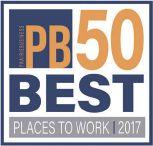
26 TWITTER.COM/PRAIRIEBIZ FACEBOOK.COM/PRAIRIEBUSINESS PRAIRIEBUSINESSMAGAZINE.COM www.nexusinnovations.com
Proud to be selected as one of the region’s 50 Best Places to Work Four Years in a Row! Business Intelligence... For More Informed Decisions Software Development Services l SharePoint Solutions l Project Management l Business Process Improvement l Business Intelligence l Organizational Consulting
PB ENERGY OCTOBER 2017 VOL 18 ISSUE 10
Doctoral student Seyedalireza Khatibi explains the different types of feedback petroleum engineering students experience using the DrillSIM 5000 drilling simulator at UND’s Hess Drilling Simulator Lab.
IMAGE: Nick Nelson / Forum News Service
changing that,” said John Harju, vice president for strategic partnerships at the EERC.

“One is enhanced oil recovery; that’s injecting something to mobilize the oil. The other is refracturing,” or returning to older wells that had been fracked in the recent past.
Those technologies haven’t revolutionized Bakken drilling yet. “Both are very much in their nascent stages,” Harju said.
Meanwhile, oil companies have coped with the lower price of oil by becoming more efficient. While it used to cost $11 million to drill and complete a well, now it costs $6 million, for example. What used to take 40 days now can be done in 15.
As a coping mechanism, “spending less seems to work pretty well,” Harju joked.

But through it all, the research by UND, the EERC, private companies and other parties continues.

Now, tantalizing results are starting to show: “Williston Basin refracturing pilot shows promise for older Bakken wells,” read a NaturalGasIntel.com headline in April.
Expect such advances to continue, especially when the global price of oil climbs. Because the tiny percentage of oil given up by the Bakken rock is a problem; and as Julian Simon wrote in 1998, “in a free society, solutions are eventually found.” PB

701.780-1276
TDENNIS@PRAIRIEBUSINESSMAGAZINE.COM
27
ENERGY
UND Petroleum Engineering student Sai Wang performs experiments in the Hess Innovation Lab. IMAGE: Nick Nelson / Forum News Service
PRAIRIE BUSINESS
TOM DENNIS EDITOR,
UND’s Petroleum Engineering department offers four different labs to provide hands-on education to students, including the PE Drilling and Fluids Lab.
IMAGE: Nick Nelson / Forum News Service
Commissioning for beginners
By Tom Dennis
When you’re an executive holding the blueprints to your new factory, and you’re out inspecting your building site in the middle of a North Dakota prairie, you’re probably not thinking about the U.S. Navy.
Maybe you should be. Because the Navy has a practice that – well, let’s put it this way: If two buildings are built side by side, and they’re identical in every respect except that one underwent this Navy-inspired practice, that latter building likely will feature higher morale among employees, fewer frustrations and, for the building’s owners, thousands of dollars in energy savings a year.
The practice is commissioning. No Navy ship gets put into service without it; and as the evidence will show, no large commercial or institutional building should, either.
Commissioning is the process of making sure that all of the systems in a structure or vessel work as designed. The testing and inspecting make a difference: “We feel comfortable telling building owners that commissioning will deliver roughly a 15 percent gain in energy efficiency,” said Bob Linder, performance group director for KargesFaulconbridge, Inc., a St. Paul-based engineering firm with offices in Fargo, Bismarck and elsewhere.
“As an organization, we went back to look at some of our larger projects, and we tried to calculate the cost of commissioning against the energy savings. We found that the projects we commissioned had a payback, on average, of just 2½ years. And that’s conservative.”

28 TWITTER.COM/PRAIRIEBIZ FACEBOOK.COM/PRAIRIEBUSINESS PRAIRIEBUSINESSMAGAZINE.COM PB CONSTRUCTION OCTOBER 2017 VOL 18 ISSUE 10
This lesser-known aspect of construction is worth learning about, because it can save building owners big bucks
Commissioning often involves accessing and monitoring complex systems, as Jim Stocke, commissioning agent and senior mechanical designer for EAPC Architects Engineers in Grand Forks, shows here. IMAGE: EAPC
Commissioned service
The easiest way to explain commissioning is to draw out the Navy example. After its christening – the ceremony in which a VIP breaks a bottle of champagne on the ship’s bow – a Navy ship undergoes months or even years of shakedown cruises, a period known as “sea trials.”
The name fits: The vessel gets suddenly accelerated, emergency stopped and otherwise tested and tried, with the goal of making sure that all systems are go.
Then and only then is the vessel commissioned, or put into active Navy service.
On land, the testing itself is called commissioning. It’s a lot less vigorous than the Navy version, but the goal is the same: to make sure all systems work as designed.
Before commissioning, many systems don’t. Nothing against the architects, contractors or engineers, but all of them are people; and in any project as complicated as building a school, office or factory, people make mistakes.
During commissioning, “we find valves installed backwards,” said Andy Cooper, director of operations and commissioning agent for Commissioning Solutions, Inc., in Fargo.
“We find thermostats controlling systems in wrong rooms. We find equipment crammed into spaces that make it impossible to change filters. Things like that.”
Some finds are huge. For example, airflow problems in one building had a university preparing to spend money on a major redesign, said Linder of KFI. But when commissioning agents inspected a hard-toaccess duct, they found a return-air filter that simply was caked with dirt.

“And that’s what was restricting the airflow,” Linder said.
“So, we saved them maybe a $100,000 redesign just by changing a filter.”
Most discoveries are minor, but even those add up. Here’s one that had cost the Bemidji School District money for years: schedules drift on air handlers.
Schedules what? Look, you may not have recognized the term, but commissioning agents smiled knowingly upon reading it. That’s because they understand two things: first, that air handlers keep air circulating. And second, that the handlers don’t have to keep air circulating when spaces are unoccupied.
But often, they do keep air circulating. In schools, for example, the handlers sometimes pump air all night long, typically because the machines’ timers didn’t get reset after a concert or other evening event.
That’s “schedules drift on air handlers.” And when it’s corrected, it’s money in the building owner’s bank.
“We just got done at the Bemidji High School, and because that building had never been commissioned, we think we found savings for them of between $110,000 and $130,000 a year,” said Jim Stocke, commissioning agent and senior mechanical designer for the Grand Forks, N.D.-based EAPC Architects Engineers.
29 CONSTRUCTION
We just got done at the Bemidji High School, and because that building had never been commissioned, we think we found savings for them of between $110,000 and $130,000 a year
–Jim Stocke
COMMISSIONING
AGENT AND SENIOR MECHANICAL DESIGNER
EAPC ARCHITECTS ENGINEERS
Andy Cooper, commissioning agent for Commissioning Solutions in Fargo, N.D., takes a reading. IMAGE: COMMISSIONING SOLUTIONS
Commissioning categories
There are several kinds of commissioning. There’s retrocommissioning, which is what happens when commissioning agents check out a building (such as Bemidji High) that never was commissioned before.

There’s recommissioning, which is a recheck of a commissioned building to inspect for wear and tear.

There’s continuous commissioning, in which the commissioning firm electronically monitors the building’s energy-use over time.
And then there’s the commissioning Wayne Gerszewski’s doing during construction of Grand Forks’ new water treatment plant. It started during the design phase, and it’ll last throughout construction – in other words, for years.
As with many large construction projects these days, commissioning at the water-plant’s site happens just about every day, said Gerszewski, project manager for AE2S, or Advanced Engineering and Environmental Services in Grand Forks.
That’s because it’s a lot easier to catch and correct problems early – say, when a heater’s being installed – rather than waiting until the unit has been walled off and the building’s occupants are starting to shiver, contractors and building owners agree.


30 TWITTER.COM/PRAIRIEBIZ FACEBOOK.COM/PRAIRIEBUSINESS PRAIRIEBUSINESSMAGAZINE.COM PB CONSTRUCTION OCTOBER 2017 VOL 18 ISSUE 10
SOLUTIONS
Notice the sunlight on the thermostat? In the accompanying infrared photo, taken by commissioning agents, the suns’s heating effect on the instrument can be seen. IMAGE: COMMISSIONING
Putting a water-treatment plant into operation is a real challenge, Gerszewski said. “There are lots of filling of basins and testing of systems to consider, because you can’t just open a valve and say, ‘OK, we’re ready to treat water.’





“You have to verify that every system operates, that the water quality meets all of the required standards. You have to prove that all of those functions work properly over time.”













And all of that involves commissioning. Of course, so does this:




“We had a case at another plant,” he said.









A pump was testing as sluggish, and the commissioning agent wondered why. “Turns out it was spinning backwards,” Gerszewski said.

“We repositioned three wires, and zip, everything’s working perfectly. That’s what commissioning does: It discovers those little things that aren’t quite right.” PB




31 S ye e Plaza BUILDING THE FUTURE toget r IN WEST FARGO 001633870r1 510 4th Avenue North Fargo, North Dakota ▪ www.gehrtzconstructionservices.com ▪ 701-297-0704 CONSTRUCTION TOM DENNIS EDITOR, PRAIRIE BUSINESS 701.780-1276 TDENNIS@PRAIRIEBUSINESSMAGAZINE.COM
Notice the coiled-up whip of wire that was meant to link this unit to an automation system, but was never connected? KFI’s commissioning agents noticed it, too. IMAGE: KARGES-FAULCONBRIDGE INC. (KFI)
Cyberopportunity
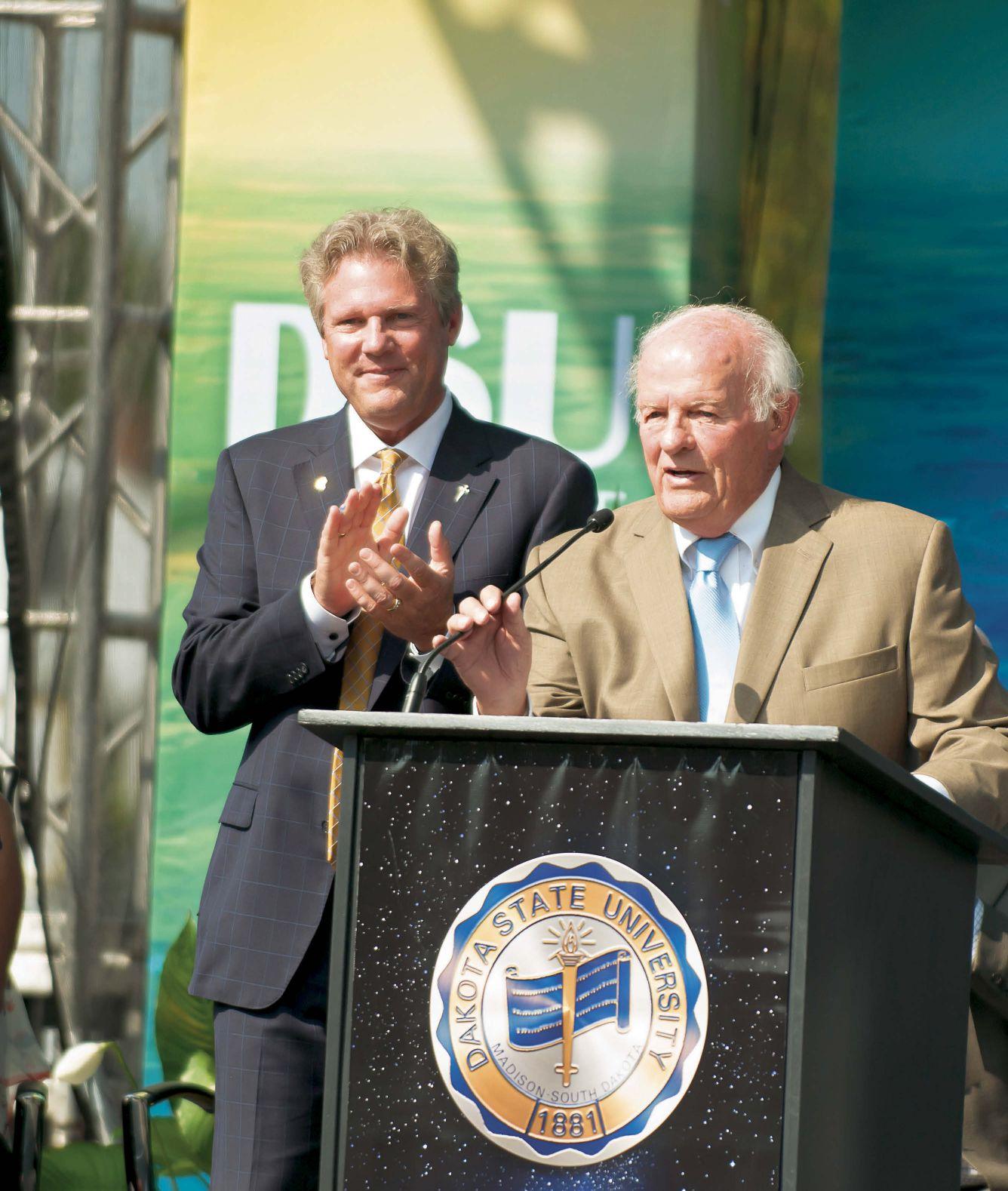
32 TWITTER.COM/PRAIRIEBIZ FACEBOOK.COM/PRAIRIEBUSINESS PRAIRIEBUSINESSMAGAZINE.COM PB TECHNOLOGY OCTOBER 2017 VOL 18 ISSUE 10
That’s
to think of cybersecurity, one of the upper Midwest’s and the world’s fastest growing fields
By Tom Dennis
So you missed your chance to get in on the ground floor at Microsoft, eh?
And you’ve been kicking yourself for years, ever since you neglected to buy Apple stock when the price was low?
Then this is your lucky day.
Because now’s your chance to ride the next wave. And best of all, you can catch this particular wave right here the Midwest.
What field is it that seems poised for such growth?
The field is cybersecurity. And a moment’s reflection will convince you that the forecast is likely true.
“Think of it this way,” said Jeremy Straub, assistant professor of computer science at North Dakota State University.
Once upon a time, you had a personal computer in your home with just one server, which meant just one firewall, Straub said. But now, you may be connected to the Internet via your phone, your watch, your thermostat, your vacuum cleaner, your refrigerator, your Xbox, your car, your home security system, even your pacemaker and your hearing aid.
Plus, the number of those connections is going to grow, not shrink.
And all of those devices need security.
“Now, multiply those numbers for one individual by the billions of people and businesses around the world,” Straub said.
“You’ll start to see the demand.”
No wonder North Dakota, South Dakota and Minnesota are launching extensive cybersecurity training programs and other initiatives. And no wonder BusinessInsider.com reported that “many entry-level cybersecurity jobs have a starting salary of $80,000 or more,” while Forbes.com headlined one story, “Top cybersecurity salaries in U.S. metros hit $380,000.”
In this story, we’ll look first at the field’s growth in a bit more detail. Then we’ll highlight local initiatives that are trying to meet the demand – including in South Dakota, where at one university, a $60 million cybersecurity education and research expansion is now underway.
The demand
“As the CEO of Symantec said, the demand for a cybersecurity workforce is expected to rise to 6 million globally by 2019, with a projected shortfall of 1.5 million,” said Art Bakke, information security officer for the Bismarck-based Starion Bank.

Along those lines, “the Bureau of Labor Statistics says that demand for information security professionals is expected to grow by 53 percent through 2018.”
It’s not just the “Internet of things” that’s creating this demand, although those numbers, too, are staggering. Some 30 billion devices are likely to be hooked up to the Internet by 2020, Bakke said.
33
how
In August, Miles Beacom (left) and T. Denny Sanford announced a joint $30 million gift to Dakota State University in Madison, S.D. The money will be used, in part, to build a new cybersecurity facililty that will let students and researchers do highly classified government and industry work on campus. IMAGE: DAKOTA STATE UNIVERSITY
TECHNOLOGY
It’s also the viciousness, scale and increasing frequency of hacker attacks. As recently as early September, Equifax announced a data breach compromising the personal information of 140 million Americans, nearly half of the people in the United States.
“That’s why I don’t think the cybersecurity bubble – unlike a lot of the bubbles out there – is ever going to pop,” said Mike Lehmberg, security analyst for Network Center Inc., a Fargo-based tech solutions firm.
“As things get more interconnected, we’re going to need more people to secure them, not fewer. Because no matter how much of a supercomputer we may have, if people can find a way of securing something, others will find a way of breaking into it.”
THe supply
But don’t despair. The upper Midwest can be a leader in vaccinating society against computer viruses and hackers, Bakke and others said.
Geography is not a concern, after all. Employers everywhere need cybersecurity workers; plus, many in the field can telecommute. So, cybersecurity workers in Minnesota and the Dakotas can get greatpaying jobs without having to move.
The burgeoning unmanned aircraft systems sector demands specialized cybersecurity; and at the University of North Dakota, Prakash Ranganathan, assistant professor of electrical engineering, and his students already are leading in that work.
At NDSU, North Dakota’s open roads are a plus, because Jeremy Straub’s team eventually will use those roads to test hacker-proofed self-driving cars.
In fact, the entire North Dakota University System is focusing on cybersecurity.

Prompted by Chancellor Mark Hagerott, former deputy director of the Center for Cyber Security Studies at the U.S. Naval Academy, this focus is resulting in programs such as a joint Graduate Certificate in Cyber Security.
Students take three core courses – one each from UND, NDSU and Minot State University – plus an elective, and wind up with a broad foundation in the topic.

Meanwhile, Dakota State University in Madison, S.D., got there first. For years the school has been a leader in cybersecurity, holding four Centers of Academic Excellence designations from the National Security Agency and Homeland Security department. Then in August, philanthropists Miles and Lisa Beacom and Denny Sanford announced a joint gift of $30 million to the school.
When matched by state and federal grants, the gifts will help DSU expand its offerings, in part by building an $18 million cyber lab where students and researchers can work on classified information.
The skills
Jim Griffith is CEO of Corporate Technologies, a Minneapolis-based firm with offices in Fargo and elsewhere. For his part, he hopes all of these schools train professionals who know methodology, not just technology.
“Whatever technology they’re teaching this year, in three years it’s not going to be relevant,” Griffith said.
“The methodology – that’s more important. How do you troubleshoot? How do you trace a problem back to its source?
“Make sure they keep training people who are strong investigators,” he said.
And make sure their ethics are strong as well, said Kevin Fishbeck, associate professor of computer information systems at the University of Mary in Bismarck.
The University of Mary teaches ethics as part of its cybersecurity classes.
“When you’re setting up firewalls, and you have the ability to do backdoors and other things like that, you have to have the moral strength not to take advantage of that,” Fishbeck said.
“We tell our students, it’s like ‘Spiderman’: ‘With great power comes great responsibility.’
“Ethics is a very big component of what we try to stress.” PB
34 TWITTER.COM/PRAIRIEBIZ FACEBOOK.COM/PRAIRIEBUSINESS PRAIRIEBUSINESSMAGAZINE.COM PB TECHNOLOGY OCTOBER 2017 VOL 18 ISSUE 10 TOM DENNIS EDITOR, PRAIRIE BUSINESS 701.780-1276 TDENNIS@PRAIRIEBUSINESSMAGAZINE.COM
At North Dakota State University this fall, the number of new computer-science undergraduates is more than 30 percent larger than last fall’s record-breaking group. The first-year students are pictured here with Kendall Nygard, department chair.
IMAGE: NDSU UNIVERSITY RELATIONS
When Andrew Dubiel was a student at the University of Mary in Bismarck, his cybersecurity study led him to help develop the device pictured here: a USB drive that a user must insert into his or her computer for a login.
IMAGE: University of Mary

 By TOM DENNIS
By TOM DENNIS
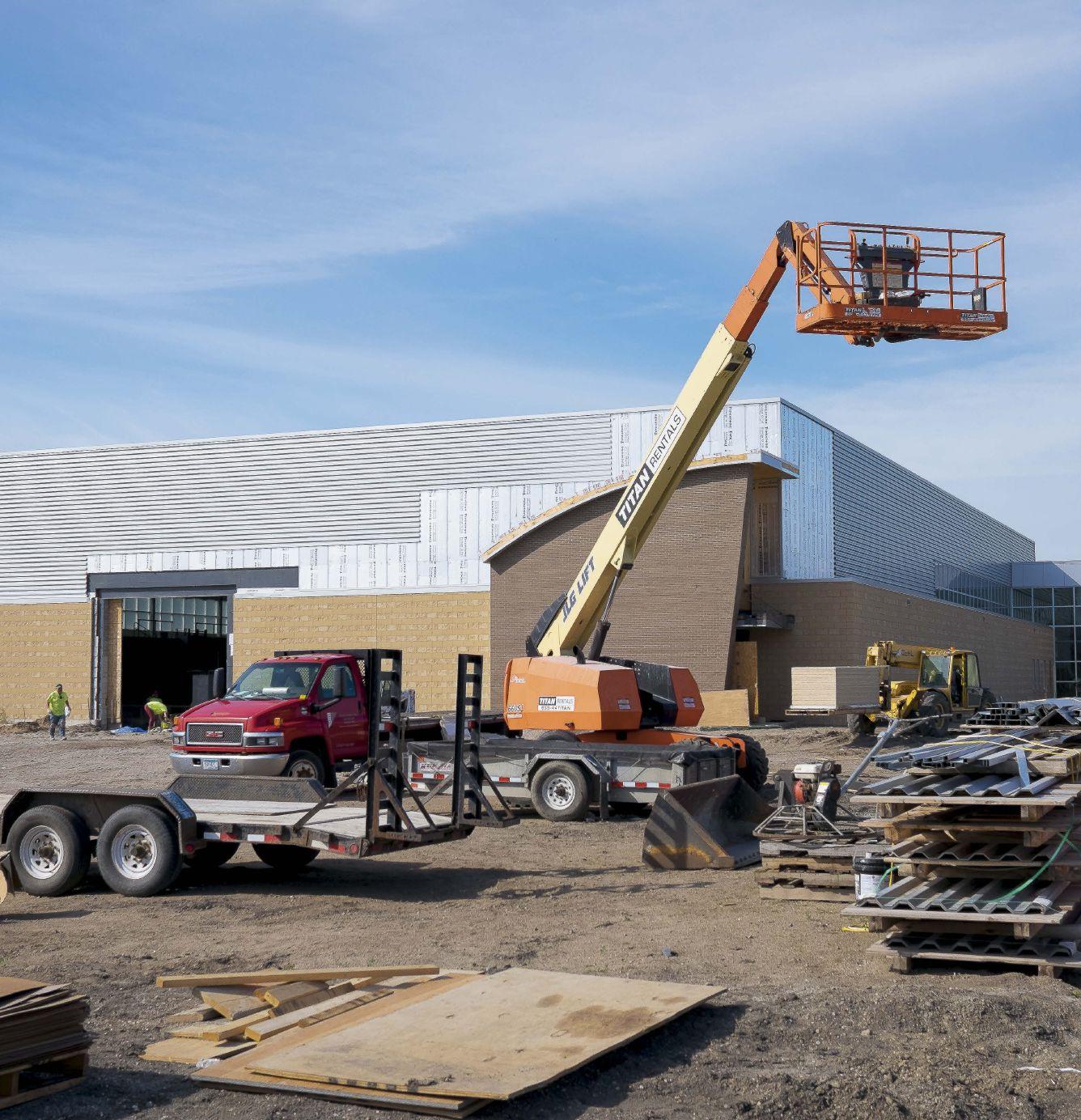
36 TWITTER.COM/PRAIRIEBIZ FACEBOOK.COM/PRAIRIEBUSINESS PRAIRIEBUSINESSMAGAZINE.COM PB CONSTRUCTIONCORNER OCTOBER 2017 VOL 18 ISSUE 10
Growing strong Construction continues on the Hulbert Aquatic Center in West Fargo, N.D. on Tuesday, September 5, 2017. IMAGE: Nick Nelson / Forum News Service To accommodate growth, the West Fargo School District is putting first-class facilities in place

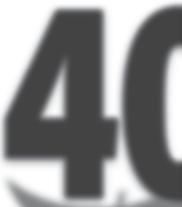











001635982r1 NOW ACCEPTING NOMINATIONS FOR The 40 under 40 issue of Prairie Business magazine actively supports and celebrates young professionals. The award honors individuals who strive toward the highest levels of personal and professional accomplishments, who excel in their chosen field, devote time and energy to their community in a meaningful way, and forge paths of leadership. ACCEPTING NOMINATIONS THROUGH OCTOBER 18TH Do you know a young professional who deserves recognition? PREMIER BUSINESS MAGAZINE OF THE NORTHERN PLAINS DECEMBER 2016 under 2017 TO NOMINATE, PLEASE GO TO PRAIRIEBUSINESSMAGAZINE.COM 37
Prairie Business makes a couple of bets in this issue. Cybersecurity is one; the growth potential for this area of the technology industry seems almost unlimited.
The Bakken is another. One geologist said there’s enough oil there to fill Lake Sakakawea -- twice.
The West Fargo School District is a third. Specifically, if you’re a highschool sports fan in North Dakota, watch West Fargo’s teams. Taxpayers there seem determined to excel in both athletics and academics, and they’re spending the money to do it.
This year and next, for example, the West Fargo School District will be opening the doors to spectacular facilities that the district built with a $98 million bond issue.
Taxpayers voted for the proposal in 2015 by a margin of 4-1. That came on the heels of an also-successful 2011 referendum, a $82.5 million bond issue that built, among other facilities, Sheyenne High School.
This year’s grand openings will include the Hulbert Aquatic Center, touted by supporters as “the finest indoor swimming venue in the Upper Midwest.” The 10-lane pool was brought in from Omaha, where it previously hosted Michael Phelps, Katie Ledecky and others in the 2016 Olympic Trials.


38 TWITTER.COM/PRAIRIEBIZ FACEBOOK.COM/PRAIRIEBUSINESS PRAIRIEBUSINESSMAGAZINE.COM PB CONSTRUCTIONCORNER OCTOBER 2017 VOL 18 ISSUE 10
Interior, Hulbert Aquatic Center (August photo).
IMAGE: WEST FARGO SCHOOL DISTRICT
The electronic sign for the Hulbert Aquatic Center in West Fargo, N.D., will be activated when the facility opens in November.
IMAGE: Nick Nelson / Forum News Service
TOUTED AS the finest



The $20.6 million facility will seat 1,100 spectators and will bid not only for North Dakota high school championships but also Midwestern and university swim meets.
Two new elementary schools will bring the district’s total to 14. A new transportation facility will house up to 100 school buses indoors. Several schools are getting new classrooms, interior renovations and expanded common spaces.
And the district’s new $18 million, two-sheet hockey facility – the West Fargo Sports Arena – is big enough to host both the West Fargo and Sheyenne high schools’ hockey programs. Just in case, though, architects left room for a third sheet of ice, should the district keep growing and pass yet another bond issue – as many West Fargo observers expect. PB

39 CONSTRUCTION CORNER TOM DENNIS EDITOR, PRAIRIE BUSINESS 701.780-1276 TDENNIS@PRAIRIEBUSINESSMAGAZINE.COM
Exterior, Willow Park Elementary School, West Fargo, N.D. IMAGE: Nick Nelson / Forum News Service
indoor swimming venue in the Upper Midwest. Like and follow us! WWW.PRAIRIEBUSINESSMAGAZINE.COM 001635971r1
Community college done right As the 2017 Aspen Prize proves, South Dakota’s Lake Area Technical Institute ranks with America’s best
 By TOM DENNIS
By TOM DENNIS
When you think of America at its finest, you probably think of the Marines on Iwo Jima, not a hobbyist fussing about in his or her garage.
But the fact is, both scenes should be draped in red, white and blue. That’s because tinkering is one of our country’s great strengths. It’s the quality on display in the garage; it’s the trait that energized both Thomas Edison and Steve Jobs, among other American inventors.
And here’s the thing: Educators and other professionals can be tinkerers, too.
Consider Lake Area Technical Institute in Watertown, S.D., a twoyear school whose inventiveness seemingly has “cracked the code” for community college success.
At Lake Area Tech, “80 percent of students remain enrolled from their first to second year, and 67 percent of students graduate within three years, a percentage three times greater than the national average. … (Furthermore,) nearly every student who graduates does so with a job. Within just six months of graduation, 99 percent of students are employed or continuing their education.”
That’s from a citation – and not just any citation. Earlier this year, Lake Area Tech won the 2017 Aspen Prize, America’s preeminent award for community college excellence.
How did the college do it?
Essentially, by tinkering. Lake Area Tech was a finalist for the prize in three previous rounds; and each time, the college listened and learned, further refining its educational approach.
Today, Lake Area Tech is “a cohort-based community learning environment that’s hands-on and closely tied to industry,” said Mike Cartney, the school’s president, in a Prairie Business interview.
And over the years, he said, the school has learned that “all those factors play a significant role in our students’ success.”
For example, “cohort-based” means the students “come in together as a group, and we keep them together as a group,” Cartney said.
So, if a student needs remedial math, he or she learns it at times that don’t interfere with the group’s course of study. Lake Area Tech takes
40 TWITTER.COM/PRAIRIEBIZ FACEBOOK.COM/PRAIRIEBUSINESS PRAIRIEBUSINESSMAGAZINE.COM PB GENERATIONNEXT OCTOBER 2017 VOL 18 ISSUE 10























41
pains to make this happen; and that way, “the students can stay with their group and really get to be a community, going through together and helping each other out.”
The “close ties to industry” evolved the same way. Today, “we have over 400 industry partners,” Cartney said.
“You’ll see them on campus almost every day. Every program has an industry advisory board; they have the final say on curriculum, to make sure that what we’re doing is meaningful to industry.”
The attention pays off. “We had nine programs last year in which the starting salary for our graduates is over $40,000 a year,” Cartney said.
“We have two programs where the starting salary is over $50,000. … Employers are vying for our students, and I say ‘vying for’ because most of our students will have a job in December before they graduate.”
Here’s another policy that grew from active listening: At Lake Area Tech, “we’ve redefined success,” Cartney said.

“It’s not graduation. It’s placement. … What that does is, it changes the whole conversation for students,” many of whom are the first in their families to go to college.
So, “we don’t talk about the degree they’re going to get. We say they’re going to be an energy technician or a machinist, or they’re going to build parts for satellites.”
That matters, as the tangible goal seems to give the students much stronger motivation to stay in school, Cartney said.

42 TWITTER.COM/PRAIRIEBIZ FACEBOOK.COM/PRAIRIEBUSINESS PRAIRIEBUSINESSMAGAZINE.COM PB GENERATIONNEXT OCTOBER 2017 VOL 18 ISSUE 10
President Barack Obama spoke at the Lake Area Technical Institute commencement ceremony in 2015. IMAGE: LAKE AREA TECH
Mike Cartney, president of Lake Area Technical Institute, Watertown, S.D.
Now, here’s a lesson for colleges in North Dakota, Minnesota and beyond: Thanks to both policy and philanthropy, South Dakota and Lake Area Tech are making progress on equity – the fact that across America, students from low-income families tend to graduate at much lower rates.

The Build Dakota program helps. Funded by $25 million from philanthropist T. Denny Sanford and $25 million from South Dakota, the program gives full-ride scholarships to students in high-demand technical fields. The students, in return, pledge to work in that field in South Dakota for three years after graduation.
Couple that with hundreds of thousands of dollars in local scholarships from other community and industry partners, and you’ll see why Lake Area Tech has “significantly reduced the gap in completion between low-income and other students,” the Aspen Prize citation states.
Joshua Wyner, executive director of the Aspen Institute College Excellence Program, put it this way at the time of the award.
“On every measure of community college excellence, Lake Area Technical Institute is firing on all cylinders,” Wyner said.
“Its outstanding graduation and job placement rates are a result of its deep commitment to ensuring that all students thrive in the classroom and in great jobs after graduation.”

Those words may not rival “Uncommon valor was a common virtue,” the famed inscription on the Iwo Jima monument in Washington. But they’re inspiring in their own all-American way. PB
TOM DENNIS EDITOR, PRAIRIE BUSINESS 701.780-1276

43 001255241r1 001631770r1
TDENNIS@PRAIRIEBUSINESSMAGAZINE.COM
Students celebrate at a commencement ceremony at Lake Area Technical Institute in Watertown, S.D.
IMAGE: LAKE AREA TECH
Q.
INSIGHTs & INTUITION
When you’re recruiting, what’s your community’s biggest asset -- in other words, the feature that candidates are most impressed by? What tends to be its biggest liability?
Once people visit, they are often pleasantly surprised by both the city of Grand Forks and the health system. It’s rarely what they pictured or expected.
Our biggest assets include our friendly and helpful community, civic safety, top-ranked schools and easy commutes. We also have one of the most beautiful hockey arenas in the country and a state-of-the-art medical school.
The weather is the biggest perceived liability, but we can change this to a positive by showing that regardless of the weather, we do not slow down and are equipped for whatever comes our way.
It’s gratifying when you bring a hesitant candidate to Grand Forks, and after their visit, they rave about the community and all it has to offer.
Northern State University’s greatest asset, in addition to our beautiful campus, is the positive momentum our campus is experiencing. With nearly $75 million (most of which was privately raised) recently invested or being invested into campus infrastructure, we feel ready to take our campus to the next level. People are excited to take part in that momentum.
The greatest liability for candidates coming from out-of-state is the difficulty in traveling to Aberdeen, S.D. While we are incredibly fortunate to have air service in Aberdeen, candidates from around the country usually view the number of flights and departure times as a detriment.
Susan Bostian DIRECTOR OF HUMAN RESOURCES AND ASSOCIATE VICE PRESIDENT OF FINANCE & ADMINISTRATION


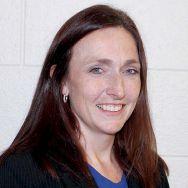 NORTHERN STATE UNIVERSITY ABERDEEN, S.D.
NORTHERN STATE UNIVERSITY ABERDEEN, S.D.
Candidates are impressed with Bismarck-Mandan’s friendly people, strong work ethic, cleanliness and safety and exceptionally high-quality health care and schools.
This community is thriving and offers a wealth of dining, shopping and music experiences and public events. An extensive trail system showcases the Missouri River’s wonderful natural beauty and makes it easy to take part in outdoor activities such as water sports, fishing, golf, hiking and biking. And as the state capital, Bismarck is also the hub of governmental and legislative activity.
Bismarck is challenged with higher housing costs than some other North Dakota cities, fewer big-city entertainment options and apprehension about winter weather.
TWITTER.COM/PRAIRIEBIZ FACEBOOK.COM/PRAIRIEBUSINESS PRAIRIEBUSINESSMAGAZINE.COM 44
INSIGHTs&intuition OCTOBER 2017 VOL 18 ISSUE 10 BROUGHT TO YOU BY
Jennifer Semling
MANAGER OF PHYSICIAN RECRUITMENT ALTRU HEALTH SYSTEM GRAND FORKS, N.D.
Diane Fladeland
VICE PRESIDENT FOR ACADEMIC AFFAIRS UNIVERSITY OF MARY BISMARCK, N.D.
Kris Olson
VICE PRESIDENT OF PHYSICIAN & PROFESSIONAL SERVICES ESSENTIA HEALTH FARGO, N.D.



Our biggest asset in Fargo-Moorhead, hands down, is the people in this community. Candidates repeatedly comment on how friendly everyone is, how safe they feel and how much opportunity there is here. This community has a lot to offer in the form of restaurants, cultural events, educational options and entertainment. When they visit, they want to raise their families here. And once they are here, they feel welcomed into the community by our patients.
The downside is the movie “Fargo”! There are still some who see that as a stigma; but overall, if we can get them to come and visit – they will join us!
As a company, we strive to improve the lives of people and communities, and that’s an interest our candidates share. We all want to live in a desirable neighborhood, drive roads that are easy to navigate, spend time playing in the park or watching the hometown baseball team win.
Our candidates get excited about the opportunity to design and enhance their surroundings and to become involved in the community. This can be a challenge for anyone new to the area. We have found that the local Chamber of Commerce is a great asset, with several resources that encourage residents to get involved.
One of the most distinguishing characteristics of Minot State University is our community culture. Candidates encounter a highly engaging experience, and they appreciate our keen interest in who they are as individuals.
In addition, new visitors are happily shocked by the beauty of the landscape and all that the city of Minot has to offer.
Yes, the cold weather sparks some questions, but it doesn’t seem to be a big concern to our candidates. The quality of life here in Minot matters more to them than the winter weather. And of course, with so many faculty, staff, students and former Air Force personnel choosing Minot over warmer cities, how bad can it really be?
45 INSIGHTS & INTUITION
RECRUITER KLJ BISMARCK, N.D.
Missy Schmidt
Marc Wachtfogel
DIRECTOR, HUMAN RESOURCES MINOT STATE UNIVERSITY MINOT, N.D.
Annual estimates of resident population
Canadian Border Crossings (Autos), 2013-2017

Estimate of population change, 2015-2016
Median sales prices of existing single-family homes
Quarter 1 and Quarter 2, 2017
Average ACT scores in ACT-required states, 2017 graduating class
DATA ASSEMBLED BY TOM DENNIS, PRAIRIE BUSINESS EDITOR
(Figures in thousands of dollars) United States (in millions) 2010 309 2011 312 2012 314 2013 316 2014 319 2015 321 2016 323 Minnesota (in millions) 5.311 5.349 5.380 5.419 5.453 5.482 5.520 North Dakota (raw number) 674,526685,476702,087724,019739,904756,835757,952 South Dakota (raw number) 816,325824,398834,441844,922852,561857,919865,454 TWITTER.COM/PRAIRIEBIZ FACEBOOK.COM/PRAIRIEBUSINESS PRAIRIEBUSINESSMAGAZINE.COM 464 YEAR
Source: U.S. Census Bureau Chart source: North Dakota Tourism Division Source: Bureau of Labor Statistics Source: ACT Source: National Association of Realtors bismarck, n.d. Duluth, Minn. Fargo-Moorhead Grand ForksEast Grand Forks Mpls-St. Paul Sioux Falls, S.D. bismarck, n.d. 129,717 279,381 233,642 102,226 3,518,252 251,889 129,717 2015 Population Estimate (July 1) Change, 2015-2016 131,635 279,227 238,124 102,743 3,551,036 255,729 131,635 2016 1,918 -154 4,482 517 32,784 3,840 1,918 Number 1.5 -0.1 1.9 0.5 0.9 1.5 1.5 Percent U.S. 6.2% 6.6% 3.8% 0.5% 6.8% 7.1% midwest bismarck, nd fargo, nd mpls.-st.paul 050100150200250 U.S. 2016 2015 2014 midwest bismarck, nd fargo, nd mpls.-st.paul Sioux Falls, sd Sioux Falls, sd 050100150200250300 2017-2 2017-1 Q1-Q2 change Aug. 2017 July 2017 June 2017 Aug. 2016 0 1 2 3 4 5 6 Unemployment rates in the Midwest (in percent)
U.S.MidwestMinnesotaNorthDakotasouthDakotaDuluth,MNSt.Cloud,MNMpls-St.PaulFargo,ndGrandForksBismarck,ndSiouxFalls,sd Net change, Aug ’16-Aug. ’17 (If available) -0.5 -0.6 -0.2 -0.8 -0.4 Minnesota 100 21.5 1 Colorado 100 20.8 2 Wisconsin 100 20.5 3 Missouri 100 20.4 4 Montana 100 20.3 5 (tie) North Dakota 98 20.3 5 (tie) Utah 100 20.3 5 (tie) Wyoming 100 20.2 8 Kentucky 100 20.0 9 Tennessee 100 19.8 10 Louisiana 100 19.5 11 Arkansas 100 19.4 12 (tie) Oklahoma 100 19.4 12 (tie) Alabama 100 19.2 14 North Carolina 100 19.1 15 South Carolina 100 18.7 16 Mississippi 100 18.6 17 Nevada 100 17.8 18 Percent of graduating class Average composite score Rank PB BYTHENUMBERS OCTOBER 2017 VOL 18 ISSUE 10

















































































































































































 By TOM DENNIS
By TOM DENNIS
















 By TOM DENNIS
By TOM DENNIS

















 NORTHERN STATE UNIVERSITY ABERDEEN, S.D.
NORTHERN STATE UNIVERSITY ABERDEEN, S.D.






